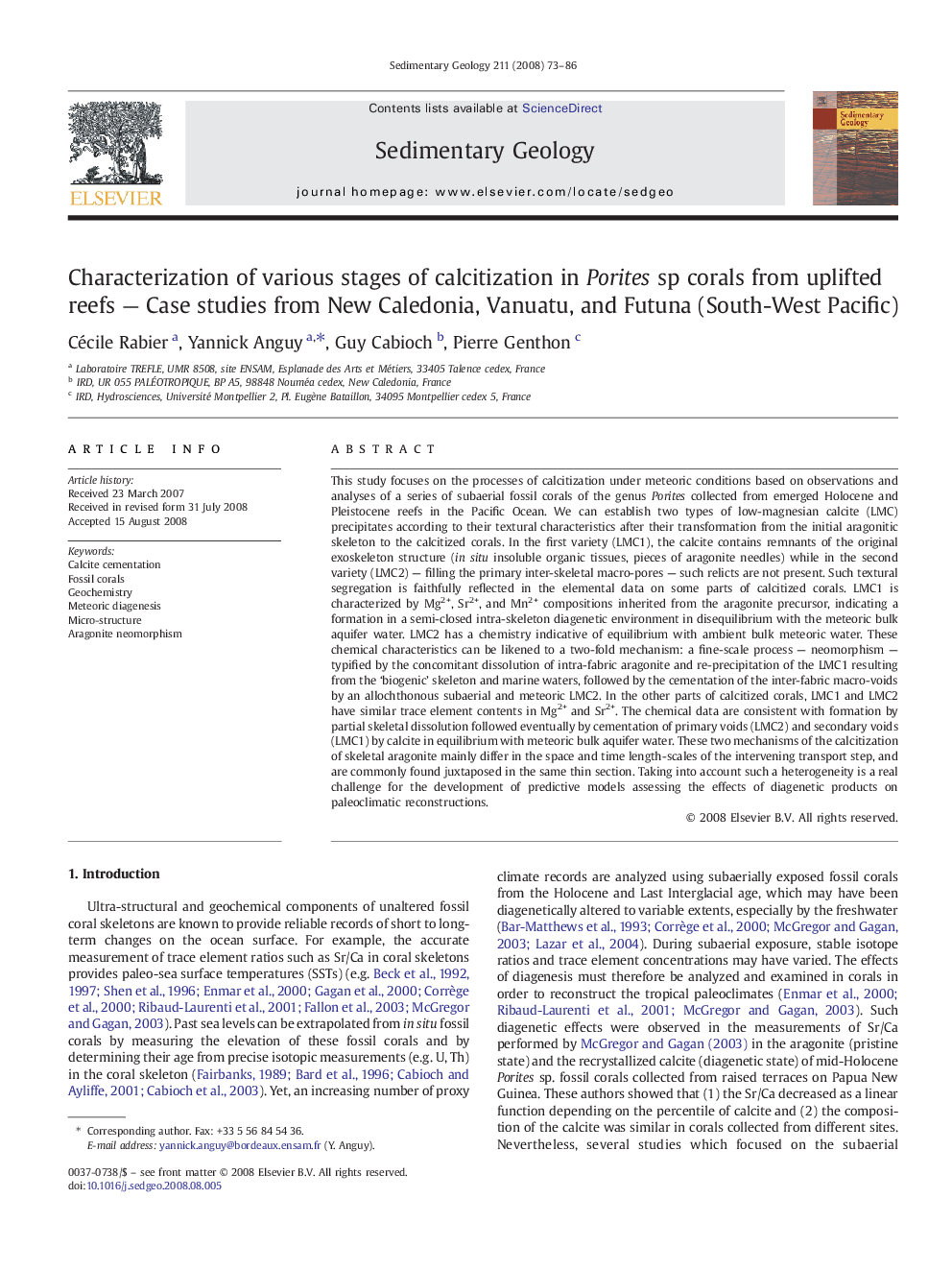| کد مقاله | کد نشریه | سال انتشار | مقاله انگلیسی | نسخه تمام متن |
|---|---|---|---|---|
| 4690523 | 1636147 | 2008 | 14 صفحه PDF | دانلود رایگان |

This study focuses on the processes of calcitization under meteoric conditions based on observations and analyses of a series of subaerial fossil corals of the genus Porites collected from emerged Holocene and Pleistocene reefs in the Pacific Ocean. We can establish two types of low-magnesian calcite (LMC) precipitates according to their textural characteristics after their transformation from the initial aragonitic skeleton to the calcitized corals. In the first variety (LMC1), the calcite contains remnants of the original exoskeleton structure (in situ insoluble organic tissues, pieces of aragonite needles) while in the second variety (LMC2) — filling the primary inter-skeletal macro-pores — such relicts are not present. Such textural segregation is faithfully reflected in the elemental data on some parts of calcitized corals. LMC1 is characterized by Mg2+, Sr2+, and Mn2+ compositions inherited from the aragonite precursor, indicating a formation in a semi-closed intra-skeleton diagenetic environment in disequilibrium with the meteoric bulk aquifer water. LMC2 has a chemistry indicative of equilibrium with ambient bulk meteoric water. These chemical characteristics can be likened to a two-fold mechanism: a fine-scale process — neomorphism — typified by the concomitant dissolution of intra-fabric aragonite and re-precipitation of the LMC1 resulting from the ‘biogenic’ skeleton and marine waters, followed by the cementation of the inter-fabric macro-voids by an allochthonous subaerial and meteoric LMC2. In the other parts of calcitized corals, LMC1 and LMC2 have similar trace element contents in Mg2+ and Sr2+. The chemical data are consistent with formation by partial skeletal dissolution followed eventually by cementation of primary voids (LMC2) and secondary voids (LMC1) by calcite in equilibrium with meteoric bulk aquifer water. These two mechanisms of the calcitization of skeletal aragonite mainly differ in the space and time length-scales of the intervening transport step, and are commonly found juxtaposed in the same thin section. Taking into account such a heterogeneity is a real challenge for the development of predictive models assessing the effects of diagenetic products on paleoclimatic reconstructions.
Journal: Sedimentary Geology - Volume 211, Issues 3–4, 15 November 2008, Pages 73–86